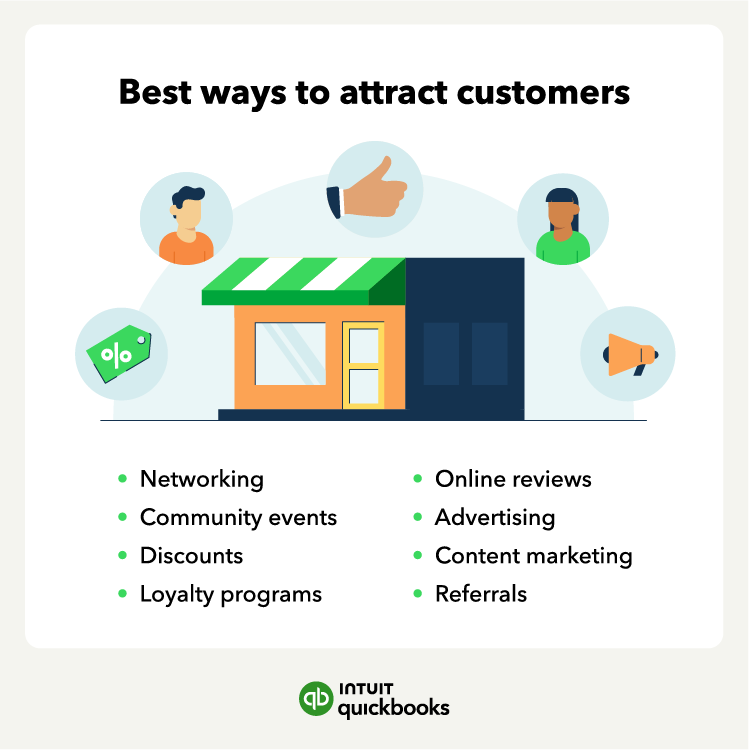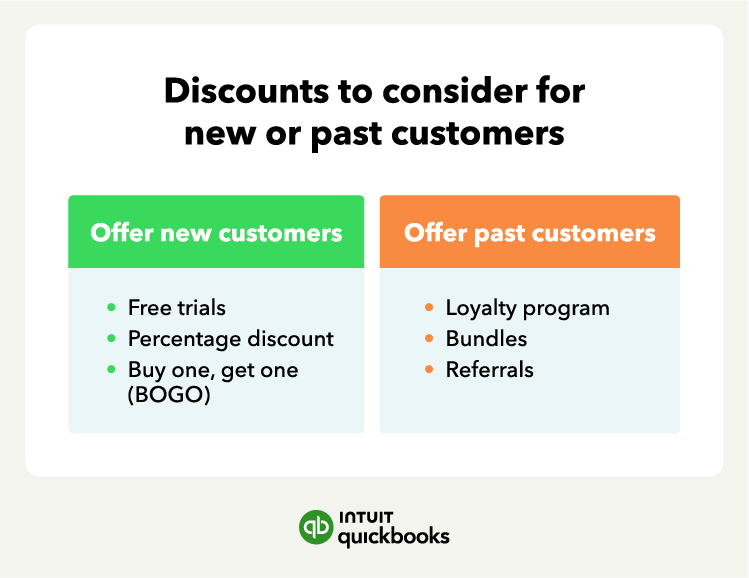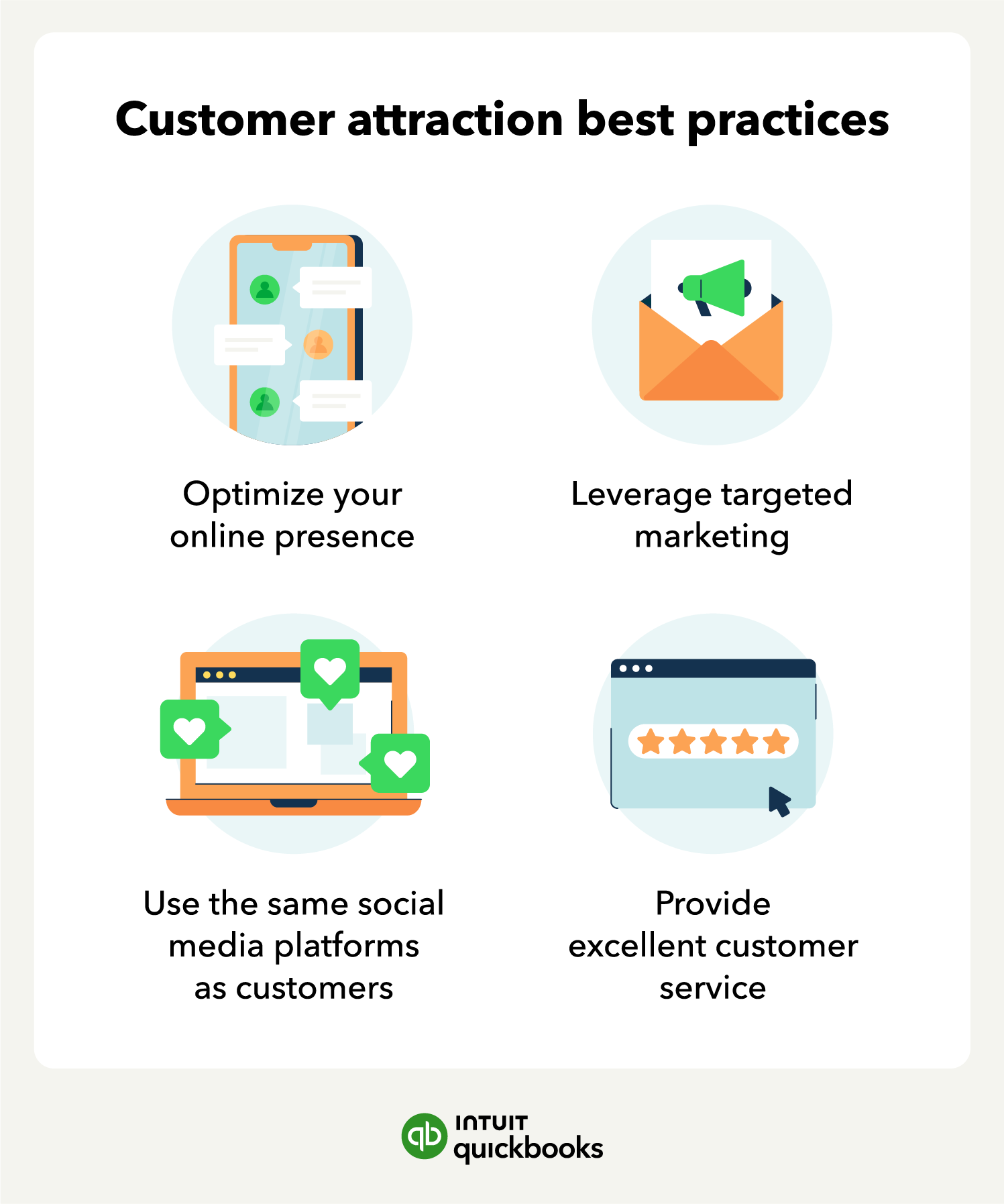The ability to get and keep customers is a key skill for any business—one that’s essential for the business’s survival. But figuring out how to attract customers can be tough, whether you're an entrepreneur, solopreneur, sole proprietor, or a seasoned business owner.
In fact, according to a recent Intuit QuickBooks Small Business Survey, 20% of small businesses say acquiring customers is the biggest obstacle inhibiting growth.
Getting customers can mean optimizing your marketing plan, fine-tuning customer engagement, and streamlining sales processes. To find first-time customers or engage old ones, you need creative marketing.
Let’s dive into strategic customer attraction and how to attract customers to your business through 15 vetted approaches.
Jump to:
- Leverage referrals
- Network for business growth
- Offer discounts to first-time customers
- Reengage old customers
- Optimize your website
- Partner with complementary businesses
- Create a loyalty program
- Utilize online reviews
- Participate in community events
- Consider advertising
- Showcase your expertise
- Make the most of social media
- Host webinars
- Offer free consultations
- Explore podcasting
Customer attraction best practices























